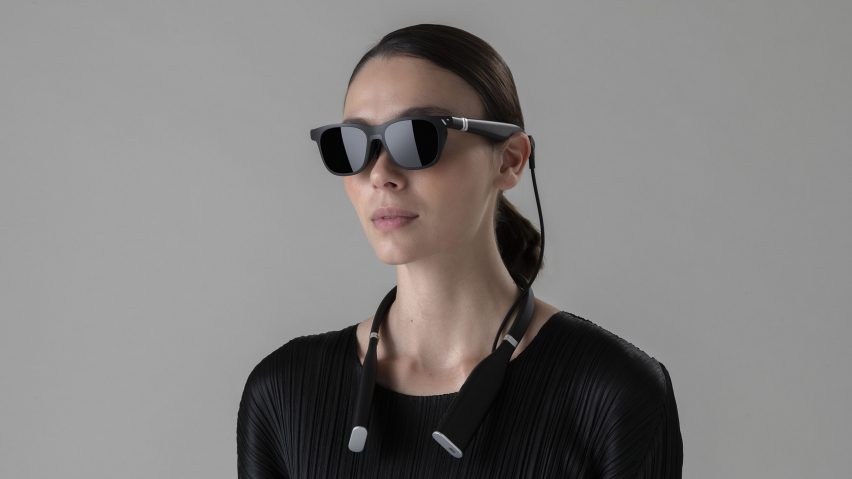
Layer designs Viture One smart glasses to stream immersive video anywhere
Benjamin Hubert's studio Layer has designed a pair of smart glasses for tech company Viture that puts a virtual screen in the wearer's line of sight so they can play games or stream media.
The lenses of the Viture One smart glasses display a cinematic 120-inch screen, which appears to float before the user in virtual reality and allows them to view content without the need for any additional devices.
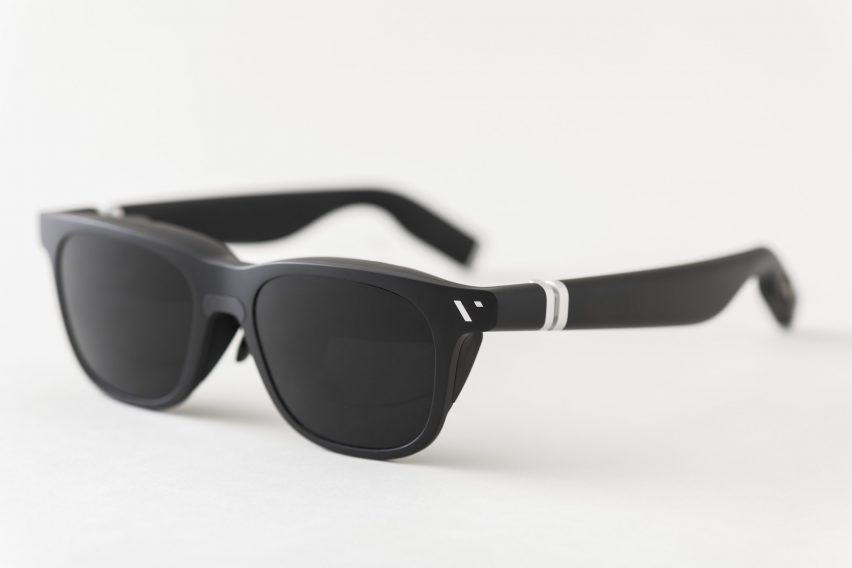
"We see one of the biggest use cases being streaming media and communicating with friends, colleagues and family nomadically," Hubert told Dezeen.
"While you can use Viture One at home it really comes into its own as you move between different locations or are in new places," he continued.
"Imagine flying, for instance, and just putting on the eyewear and streaming your favourite movie, super-sized at high quality without either carrying a large screen or using an outdated screen in the aircraft."
Layer and US start-up Viture wanted the product to appeal to a market beyond tech enthusiasts, so the eyewear is designed to be more lifestyle-focused than many other smart glasses and have a fashion-led appearance.
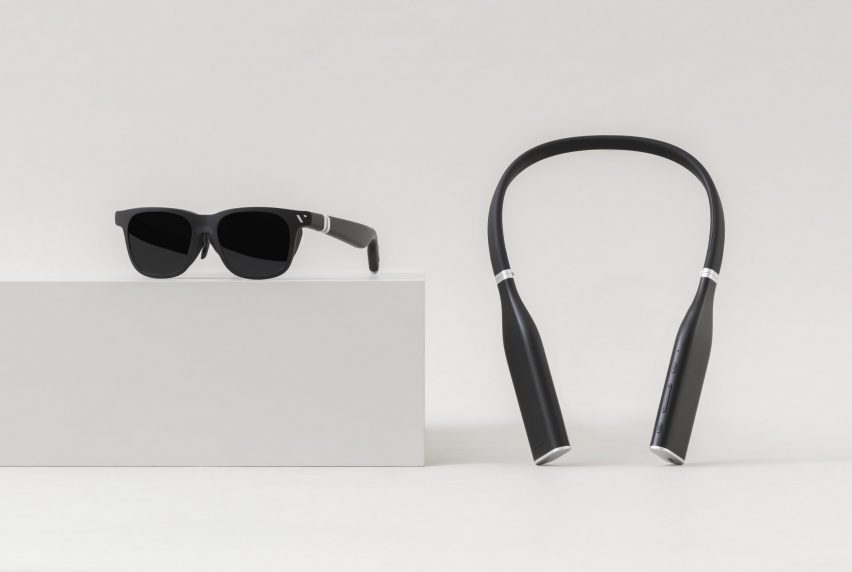
Accompanying the glasses is a semi-flexible neckband that wraps around the user's neck like a collar. This contains the machine's central processing unit (CPU), graphics processing unit (GPU), controls and battery.
"One of the challenges of any smart wearables on the head is where do you put processing power and battery," said Hubert. "They are bulky, create heat and cause discomfort."
"To avoid long wires and to manage the heat and weight ergonomically the shoulders were the ideal place."
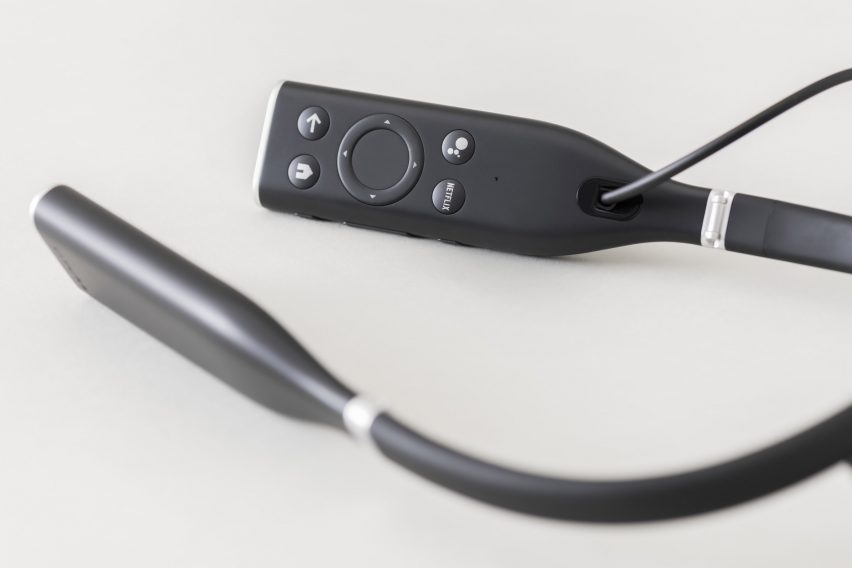
The existence of the neckband allows the glasses themselves to be slim and light. They weigh 78 grams and don't have the thick arms that give many smart glasses away.
The frames have a sinuous silhouette, with wrapped edges that hide the OLED display and allow it to be used in most lighting conditions.
Technical elements are incorporated subtly, such as partially concealed dials at the top of the frames. These adjust the position of the lenses to suit different prescriptions, meaning short-sighted people can use Viture One without their spectacles or contact lenses.
There is also a small speaker grill at the temple.
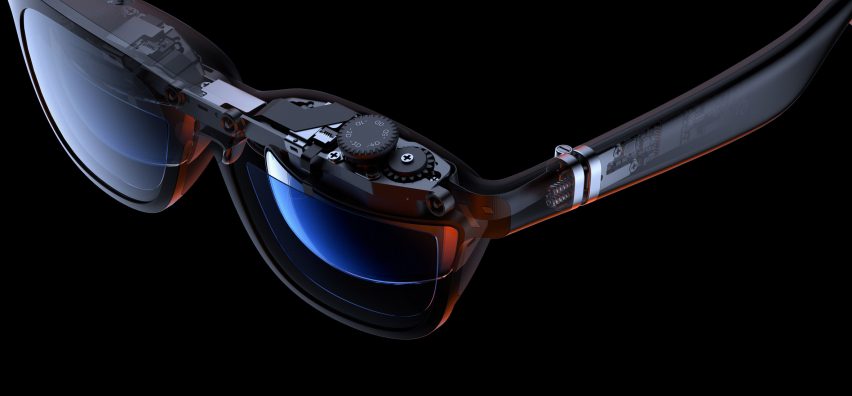
"The design philosophy behind V1 is really about simplicity, creating a smart pair of eyewear that are minimal, quite neutral but take cues from the fashion industry," said Hubert.
"We have a Wayfarer-style frame with really exquisite detailing around the hinge, the branding, and really intuitive controls and interface that allow you to adjust the media you're watching."
Most of the controls are located on the ends of the neckband, where they can be easily accessed, while the buttons on the glasses are limited to quick actions such as volume adjustment.
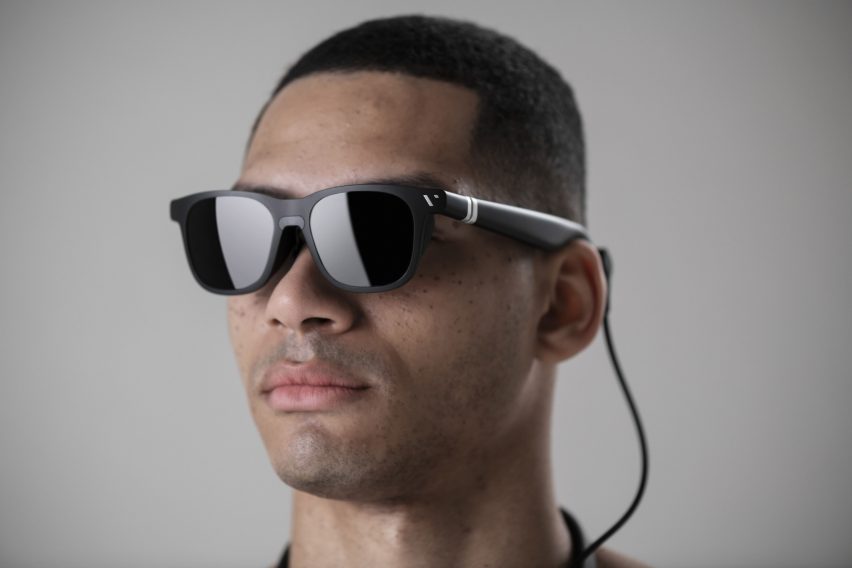
The device is compatible with a number of streaming services and gaming platforms – including GeForce, Now, Stadia, Xbox Cloud, YouTube and Twitch – and promises a pixel-free HD viewing experience with a frame rate of 60 frames per second in 1080p video mode.
Its pixel density is 55 pixels per degree, which Layer says is almost triple the resolution offered by mass-market virtual reality headsets.
London-based studio Layer frequently works on products in the technology space. Its recent work has included the LightVision meditation headset for Resonate and a collection of near-future product concepts with Panasonic.